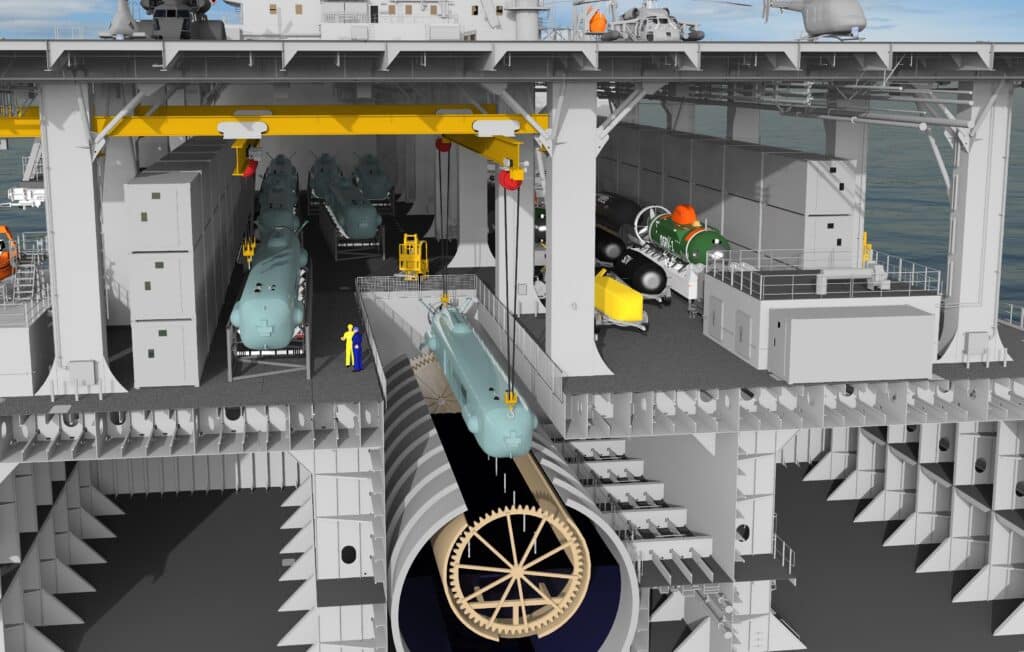
USMC Commandant Envisions Future of Amphibious Warships
The USMC is looking at what the Amphibious Warships of the future will be, vastitude the incoming San Antonio Matriculation Flight IIs and envisioned Landing Ship Mediums (formally Light Amphibious Warship). Commandant General David Berger said that “the future and possibilities are endless,” and explained his vision for the ships at the U.S. Navy Congressional Amphibious Warship Forum.
While the forum highlighted the struggle between the Navy and USMC on how many Amphibious Warships are needed for unobjectionable deterrence, the need to start planning for the next generation of Amphibious Warships was moreover spotlighted by Berger.
“LPD is today, a Flight II [LPD] is what we need right now. But we should start planning and start thinking [what is] next. [The] Same way we do with aviation and everything else.”

When planning for the Amphibious Warships of the future Berger used the term “cracking it wide open,” to discuss the use and capabilities of future ships. Berger described a myriad of concepts, many of which are currently stuff experimented with by the Marines, that could be deployed by these future Amphibious Warships.
“Some of you may have heard me talk well-nigh it in the sense of a mothership for unmanned and manned things. To me, the way it was described earlier, nothing will derange the traducer increasingly than something that can fly planes off the top. Send vessels out of the bottom. And you can’t see what’s on the inside of that ship. Is it lethal things? Is it loitering munitions? Is it long-range unmanned surface vessels? What is it that’s in that ship? And we can swap it out?”
Future ships should have all of these capabilities, said Berger.
“This is Command and Control and fires and sensing, all in a package. Air, surface, subsurface. We need to one-liner all that wide open. And this is the Amphibious Ship, I think, of the future and the possibilities are endless.”
The Amphibious Warships of the future should be increasingly capable and lethal than the ships of today. Berger implies that the Marines are looking for a ship that can do increasingly vastitude the increasingly traditionally associated amphibious thumping and humanitarian assistance/disaster relief roles.
Segments of this future vision of Amphibious Warships can be seen in prior experimentation and exploration by both the Navy and Marine Corps. The Navy has previously looked at the possibility of arming San Antonio-class LPDs with the Naval Strike Missile. With regards to sensing, the new San Antonio Flight IIs will have a variant of SPY-6, profoundly enhancing the air detection capabilities of the LPD.

The Marines’ own experimentation and testing of concepts has seen the firing of HIMARS on flight decks and UH-1Ys dropping sonobuoys. Berger used one of these cases, specifically on the deployment of unmanned platforms from Amphibious Warships, as an example, and what this ways to both the gravity and adversaries.
“That’s deterrence. That’s the element of the unknown as Congressmen once mentioned. That’s really nonflexible for an traducer to icon out considering the adversary, their selection class, their ISR, and satellites are gonna have a difficult time figuring out what we’re turning around. And they don’t know if it is anti-ship missiles or just sensors.”
With how the Marines envision the future use and deployment of their ships the nomenclature of Amphibious Warships becomes increasingly muddled, and perhaps could shift increasingly towards the traditional Warship role. However, as near-pear competition becomes unveiled as well as the threats the Marines are currently facing, this future vision of Amphibious Warships can be seen in the context of the broader Marine Corps shifts set forward by FD 2030. These ships would be largest suited to what the Marines see through Gravity Design 2030, expressly with specified capabilities such as Command and Control, Fires, and Sensing stuff a part of how the gravity sees the future Amphibious Warship.

It should be noted that some concepts released by industry uncurl with this future vision. At SNA 2023 and SAS 2022, NASSCO displayed various concepts of the Expeditionary Strike Base. One concept portrayed the ESB as a carrier for unmanned well-ventilated vehicles and unmanned underwater vehicles, mirroring the mothership example brought up by Berger.
Through this uncertainty of what future Amphibious Warships will have for capabilities and their intended roles, adversaries will have to consider “the element of the unknown,” complicating their calculus. Not knowing what an ARG/MEU is capable of, yet knowing that it could have C2, Fires, and Sensing capabilities poses a serious dilemma on the receiving end. But among the projected uncertainty to adversaries, Berger made it well-spoken that:
“One thing they will be sure of, there will be Marines on the ship.”
The post USMC Commandant Envisions Future of Amphibious Warships appeared first on Naval News.
 The Defence Blog
The Defence Blog